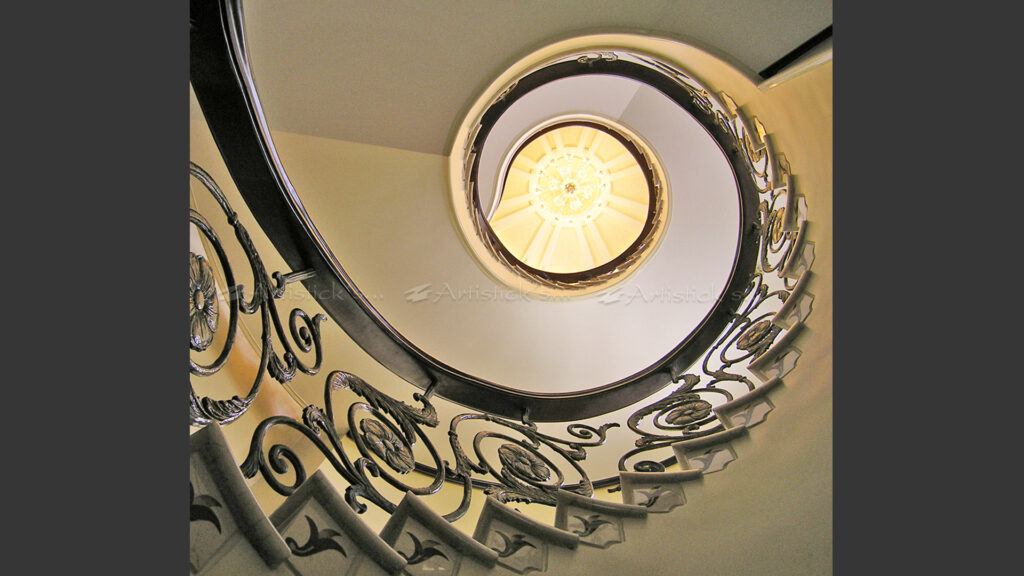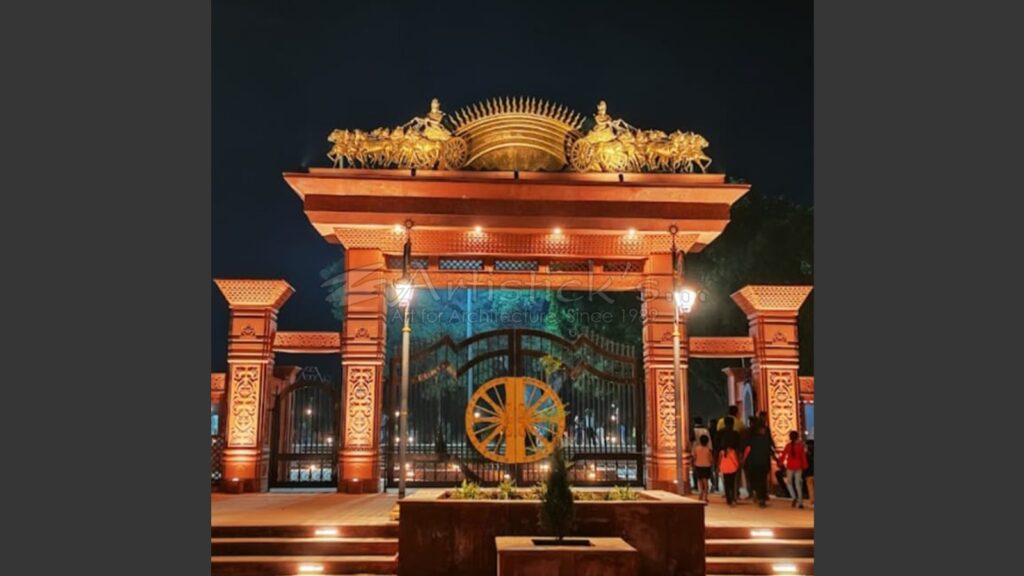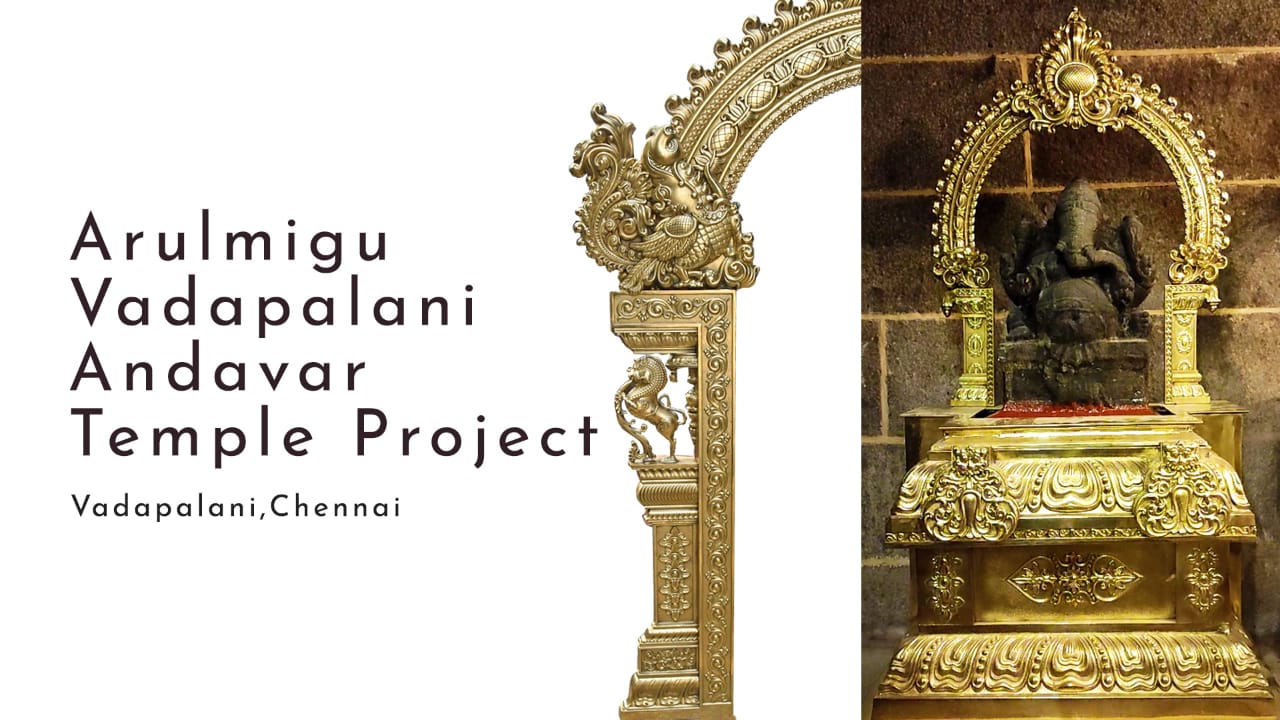
Pooja Room Door: The Gateway of Positive Energies
There is little doubt that the pooja aka puja room is arguably one of the most important and significant spaces of your home. A space where you invoke the divine, indulge in prayer and reflect in solitude, the pooja room is often associated with sanctity and purity. It is an area that is designed after much thought and consideration as it is believed to be the fulcrum of all positive and divine energy. And when it comes to designing the puja room, one of the most important aspects of the space is the pooja room door and the threshold.
Pooja Room Door: A Key Element
According to Vastu Shastra, it is mandatory to have a door for your pooja room as it is the channel through which divine energy is passed on to the entire house. It is believed that without the door, the pooja room is akin to any other space in the home and is devoid of the sacred aura. Further, it is believed that just like humans, Gods too require rest and personal space which is also the reason why pooja room doors are mandatory. It helps maintain the ambiance of piety and preserves the holiness of the entire space. A double-door design for the pooja room is ideal as it is both functional as well as aesthetic.
While choosing a pooja room door, it is recommended that you opt for a primary material like wood. Wood is structurally strong, natural and Vastu compliant. Wood is also amenable to a number of styles and you can use it to build either a traditional or more contemporary style pooja room door. It is also a great material to execute intricate designs, carvings and sculptures which are all great ideas for a pooja room door. However, solid wood is comparatively more expensive than other materials and requires a high level of maintenance too. Glass pooja room doors as well as those made from plywood are other choices that are popular and work well with a variety of décor styles and design sensibilities.
Artisticks: A One-Stop Shop for all your Pooja Door Needs
If you are looking for elegant pooja room door design ideas for your home, look no further than the House of Artisticks as they offer a complete range of door designs that are suitable for a variety of materials including solid wood, plywood, glass etc. They offer exquisite door handles and embellishments like bells, motifs, murals, etc. that can be used to accentuate the look and feel of the door. The designs range from classic to contemporary and even purely ethnic and traditional and are totally suitable for pooja doors in Indian homes.
If you are a fan of temple door designs, Artisticks offers a plethora of options. Some of them include Ashta Lakshmi, Shanku-Chakra motifs and images of other Gods and Goddesses. If minimalistic and subtle designs are your style, then you can go in for minimalistic designs crafted in brass or white metal
which can be easily embossed on the pooja room door. Artisticks also has intricate grill accessories akin to lattice work which give your pooja door a refined and sophisticated look. All you have to do is browse the website, pick and choose and finally mix and match according to your taste and overall décor theme.
Dasavathara Pooja Door Embellishments: a unique offering from Artisticks
The importance and deep significance of the Dashavataras in Hindu mythology are well known to all. As an ode to Lord Vishnu and his ten forms, Artisticks has created a unique offering in the form of ornately crafted brass pooja door embellishments that form an invaluable asset to your pooja room door. The set has been made with great attention to detail and the almost flawless craftsmanship captures the essence of each form perfectly. Ideal for solid wood pooja room doors, this one fits well onto a double-door pooja room. The motifs are consistent in terms of size and the overall look serves to accentuate the pooja room entrance design.
The ten forms represent the ten times Lord Vishnu has set foot on earth whenever there was a need to restore cosmic order. It is key to note that each time the Lord takes on a more developed or progressive form right from a fish to finally a human. The actual avatars of Vishnu are:
- Matsya (Fish)
- Kurma (Tortoise)
- Varaha (Boar)
- Narasimha (half man, half lion)
- Vamana (dwarf)
- Parashurama
- Rama
- Krishna
- Balarama
- Kalki
Significance of Dasavathara
Vishnu is often considered one of the most supreme Gods in Hindu mythology and is known to be the preserver of the entire universe. His power is unparalleled and his ten forms represent evolution and progress. Derived from the words “Dasha” which means ten and “Avatar” which means descent, the Dasavathara is known to play a major role in shaping human evolution through the centuries. Each time Lord Vishnu descended on the earth, it was with the objective of upholding Dharma and allowing good to triumph over evil.
It is believed that of the ten avatars, the first four avatars happened in Satya or Krita Yuga which is also known as the ‘The Golden Age’. The next three forms appeared in Treta Yuga while the eighth and ninth forms appeared in Dwapara Yuga. The tenth form is expected to appear in Kali Yuga. Each form of the Dashavatara is associated with a particular mythology.
Ten Unique Forms
1.The Matysa Avatar is the first of the Dasavatharas in which Lord Vishnu appeared in part-fish, part-human form and saved sage Manu and others as they were escaping the great deluge. The fish with the help of its horn steered the ship which had all forms of life in it safely to the Himalayas. The species took refuge in the Himalayas, increased in number and life was slowly restored on earth. The Matysa avatar represents alertness and sharpness.

2.The Kurma or Tortoise Avatar was the second form that appeared in Satya yuga wherein Lord Vishnu helped the Gods defeat the demons and asuras as both sides were churning the ocean for the nectar of immortality or Amruta. As the mountains started to sink, Lord Vishnu in the form of a tortoise bore the entire weight of the mountain. This avatar is a symbol of self-confidence.

3.The Varaha or half boar-half man form appeared in the Satya yuga during which he defeated the demon Hiranyaksha and retrieved the earth from the ocean by holding it up on His tusks. The Varaha avatar explains the importance of giving up material desires for spiritual ones. Till date, Varaha is worshipped as the upholder of the earth and the eternal protector of land and property.

4.The Narasimha Avatar of Lord Vishnu refers to his half man, half lion form which He undertook to protect the earth from the despotic ruler Hiranyakashipu. The form with the body of a man but the head and claws of a lion is considered as one of the most powerful forms of Lord Vishnu.

5.The Vamana or Dwarf Avatar appeared in the Treta yuga. It is the first form where the Lord appeared in human form. During this time, he retrieved the kingdom of Gods from the Asura king Mahabali and handed it back to Lord Indra. He taught the king the value of humility and the fact that wealth is transient.

6.The Parashurama Avatar is often referred to as the Brahmin warrior and is considered as one of the eight immortals of Hindu mythology. Lord Vishnu took this form to destroy all Kshatriyas who had forgotten their Dharma. Parashurama obtained a divine axe from Lord Shiva for this purpose.

7.The Rama Avatar is one of the most revered forms of Lord Vishnu and took place in the Treta Yuga. During this period, the Lord destroyed evil king Havana who had abducted his wife Sita. Lord Rama is the embodiment of truth, ethics, and righteousness and is worshipped even today.

8.The Krishna Avatar took place in the Dwapara Yuga and He is the eighth incarnation of Lord Vishnu. During this time, he killed many evil forces and guided the Pandavas to victory over the Kauravas. He also narrated the Bhagavad Gita to Arjuna and is well known to have motivated him to win the battle for the Pandavas.

9. Balarama is a significant figure in Hindu mythology and is considered an avatar of Lord Vishnu. He is often referred to as Balarama or Baladeva and is the elder brother of Lord Krishna. In Hinduism, Balarama is known for his immense strength and his role as a loyal companion and supporter of Krishna..

10.The last avatar of Lord Vishnu is Kalki. It is a form that is yet to manifest and is forecasted to appear on a white horse at the end of Kali Yuga. With its sword, it is predicted that Kalki will destroy all evil and unrighteousness at the end of Kali Yuga.

Dasavathara at Home
Having the Dasavathara at home is considered to be an auspicious sign and is known to bring peace and well-being. The Dasavathara motif set from Artisticks is sure to enhance your pooja room door and bring in plenty of positive vibes. The offering is truly niche and is a good choice if you are a fan of temple door designs that are suitable for pooja room doors for Indian homes. So, what are you waiting for, head over to the Artisticks website and order one for your home today!






